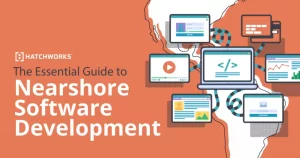What is Material Requirements Planning (MRP)?

Material Requirements Planning ( MRP ) is a standard supply planning system that helps businesses, especially product-based manufacturers, understand their inventory requirements while balancing supply and demand. Businesses use MRP systems, which are subsets of supply chain management systems, to manage inventory efficiently, plan production, and deliver the right product on time and at optimum cost.
How Does MRP Work?
A Material Requirements Planning (MRP) system streamlines the manufacturing process by determining which raw materials, components, and subassemblies are required and when finished products are assembled, based on the requisition and bill of materials (BOM). It does this by asking three main questions:
- What is needed?
- How required?
- When is it needed?
Answers to these questions provide clarity on what materials are required, how many will be met, and when the required demand will be met. Additionally, it helps facilitate an efficient and effective production schedule.
Why is MRP Important?
MRP helps your business optimize inventory levels and production schedules by giving businesses visibility into the inventory requirements needed to meet demand. Without this insight, companies have limited visibility and responsiveness, which can lead to:
- Ordering too much inventory, which increases carrying costs.
- Failure to meet demand due to insufficient raw materials results in sales losses, cancellation of contracts and depletion of stocks.
- Delaying sub-assembly structures resulting in interruptions in the production cycle, increased production costs and reduced output.
Manufacturing companies rely heavily on MRP as a supply planning system for inventory, scheduling, planning and controlling production. But MRP is also used in many other industries, from retail to restaurants, to create balance between supply and demand.
MRP Steps and Processes
The MRP process can be divided into four main steps:
1. Determining requirements to meet demand
The first step of the MRP process is to identify customer demand and the requirements needed to meet it, starting with entering customer orders and sales forecasts .
MRP takes into account the necessary sub-assemblies using the bill of materials required for production. It then breaks down the demand into individual components and raw materials.
2. Controlling inventory and allocating resources
By using MRP to control demand against inventory and allocate resources accordingly, you can see both what items are in stock and where they are. This is especially important if you have inventory in several locations . This also provides visibility of products that have already been allocated to another structure, as well as products that are not yet physically in the warehouse, are in transit, or are on order. MRP then moves inventory to appropriate locations and requests reorder recommendations.
3. Production planning
Using the master production schedule, the system determines how much time and labor is required to complete each step of each build and when they must be done so that production can occur without delay.
The production schedule also identifies which machines and workstations are required for each step and creates the appropriate work orders, purchase orders, and transfer orders. If the structure requires subassemblies, the system takes into account how much time each subassembly takes and plans accordingly.
4. Identifying problems and making recommendations
Finally, because MRP links raw materials to work orders and customer orders, it can automatically alert your team when items are late and make recommendations for existing orders: automatically moving production in or out, performing situation analyzes and creating exception plans to complete necessary builds.

MRP Inputs
How well your MRP system works depends on the quality of the data you provide to it. For an MRP system to work efficiently, every input must be accurate and up-to-date. Some of the inputs an MRP depends on include:
- Request
Including sales forecasts and customer orders. When working with projected demand, a system integrated with an enterprise-wide ERP system allows forecasting using historical sales versus sales forecasts alone.
- Bill of materials (BOM)
Maintaining a single updated version of the bill of materials is essential for accurate supply forecasting and planning. A system integrated into an organization-wide inventory management system prevents version control issues.
- Inventory
It’s important to have a real-time view of inventory across the organization to understand what items you have on hand, which items are in transit, what purchase orders have been placed, where the inventory is, and what the status of the inventory is.
- Main production schedule
The master production schedule takes all build requirements and plans machine usage, labor, and workstations to account for all outstanding work orders to be completed.
MRP Outputs
Using the inputs provided, MRP calculates what materials are required, how many are needed to complete the structure, and when they are needed in the construction process.
With this defined information, businesses can perform just-in-time (JIT) production and plan production according to material availability. This minimizes inventory levels and carrying costs because inventory is not stored in the warehouse for future production, but arrives when needed. By scheduling materials to arrive and production to begin immediately thereafter, businesses can move materials through the workflow process without delay.
MRP lays out a schedule for when materials will arrive, based on when they are needed in the production process and when subassemblies need to be scheduled. Using a master production plan and accounting for subassembly build times minimizes shelving materials and bottlenecks in the build process.
Benefits of MRP
MRP systems allow you to plan production efficiently, keep materials moving quickly through the work order, and help businesses meet customer orders on time.
An MRP system integrated into an organization eliminates manual processes such as pulling past sales and existing inventory. You’ll spend less time creating Gantt charts and production flows to understand when and where you need the product, saving time and removing a layer of complexity.
When structures are complex and require multiple subassemblies within the work order, it is easy to miscalculate the schedule. An MRP helps you understand all the components that go into each subassembly and how long it takes to complete each step, helping you avoid delays in the production cycle and increase production efficiency.
Challenges of MRP
While using an MRP solution is much better than using spreadsheets for supply planning, it is only as good as the data you put into it. The better a business understands and documents its processes, the better an MRP system can serve them.
You need to make sure you enter accurate inventory availability, time to complete a subassembly, waste calculations, and lead times from suppliers. Otherwise, your production schedule will be incorrect. An MRP cannot define the production build timeline and required materials if the data is not accounted for in the inventory record, bill of materials, and master production schedule.
MRP and ERP Comparison
MRP systems focus on planning and controlling how goods are assembled using multiple raw materials or components, specifically by controlling inventory, components, and the manufacturing process.
Enterprise resource planning (ERP) systems are a branch of MRP systems promoted by businesses that need the same level of planning and oversight for other operations such as payroll, finance and supplier management. ERP systems plan for resources across the entire organization, including financial management, order management, customer relationship management, purchasing, warehousing, and order fulfillment.




